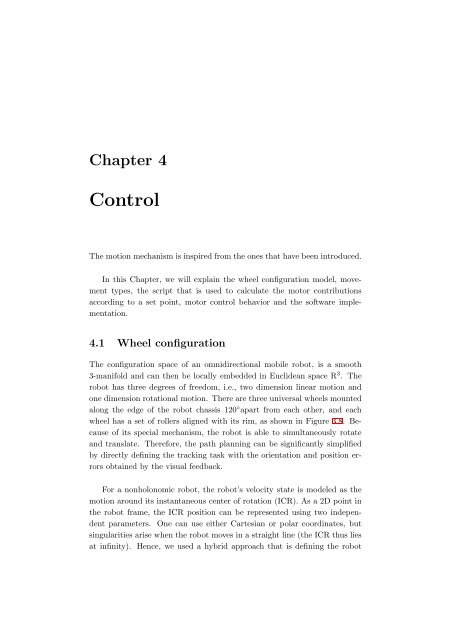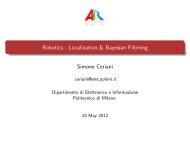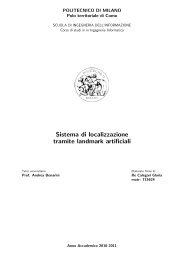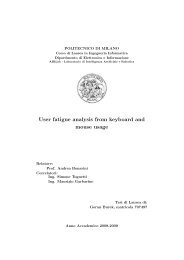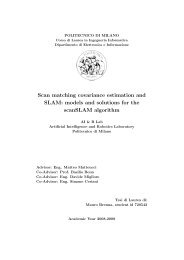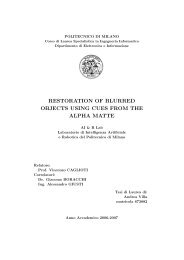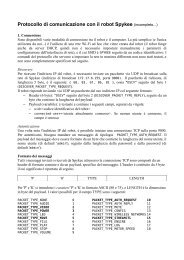Submitted version of the thesis - Airlab, the Artificial Intelligence ...
Submitted version of the thesis - Airlab, the Artificial Intelligence ...
Submitted version of the thesis - Airlab, the Artificial Intelligence ...
Create successful ePaper yourself
Turn your PDF publications into a flip-book with our unique Google optimized e-Paper software.
Chapter 4<br />
Control<br />
The motion mechanism is inspired from <strong>the</strong> ones that have been introduced.<br />
In this Chapter, we will explain <strong>the</strong> wheel configuration model, movement<br />
types, <strong>the</strong> script that is used to calculate <strong>the</strong> motor contributions<br />
according to a set point, motor control behavior and <strong>the</strong> s<strong>of</strong>tware implementation.<br />
4.1 Wheel configuration<br />
The configuration space <strong>of</strong> an omnidirectional mobile robot, is a smooth<br />
3-manifold and can <strong>the</strong>n be locally embedded in Euclidean space R 3 . The<br />
robot has three degrees <strong>of</strong> freedom, i.e., two dimension linear motion and<br />
one dimension rotational motion. There are three universal wheels mounted<br />
along <strong>the</strong> edge <strong>of</strong> <strong>the</strong> robot chassis 120 ◦ apart from each o<strong>the</strong>r, and each<br />
wheel has a set <strong>of</strong> rollers aligned with its rim, as shown in Figure 3.8. Because<br />
<strong>of</strong> its special mechanism, <strong>the</strong> robot is able to simultaneously rotate<br />
and translate. Therefore, <strong>the</strong> path planning can be significantly simplified<br />
by directly defining <strong>the</strong> tracking task with <strong>the</strong> orientation and position errors<br />
obtained by <strong>the</strong> visual feedback.<br />
For a nonholonomic robot, <strong>the</strong> robot’s velocity state is modeled as <strong>the</strong><br />
motion around its instantaneous center <strong>of</strong> rotation (ICR). As a 2D point in<br />
<strong>the</strong> robot frame, <strong>the</strong> ICR position can be represented using two independent<br />
parameters. One can use ei<strong>the</strong>r Cartesian or polar coordinates, but<br />
singularities arise when <strong>the</strong> robot moves in a straight line (<strong>the</strong> ICR thus lies<br />
at infinity). Hence, we used a hybrid approach that is defining <strong>the</strong> robot


